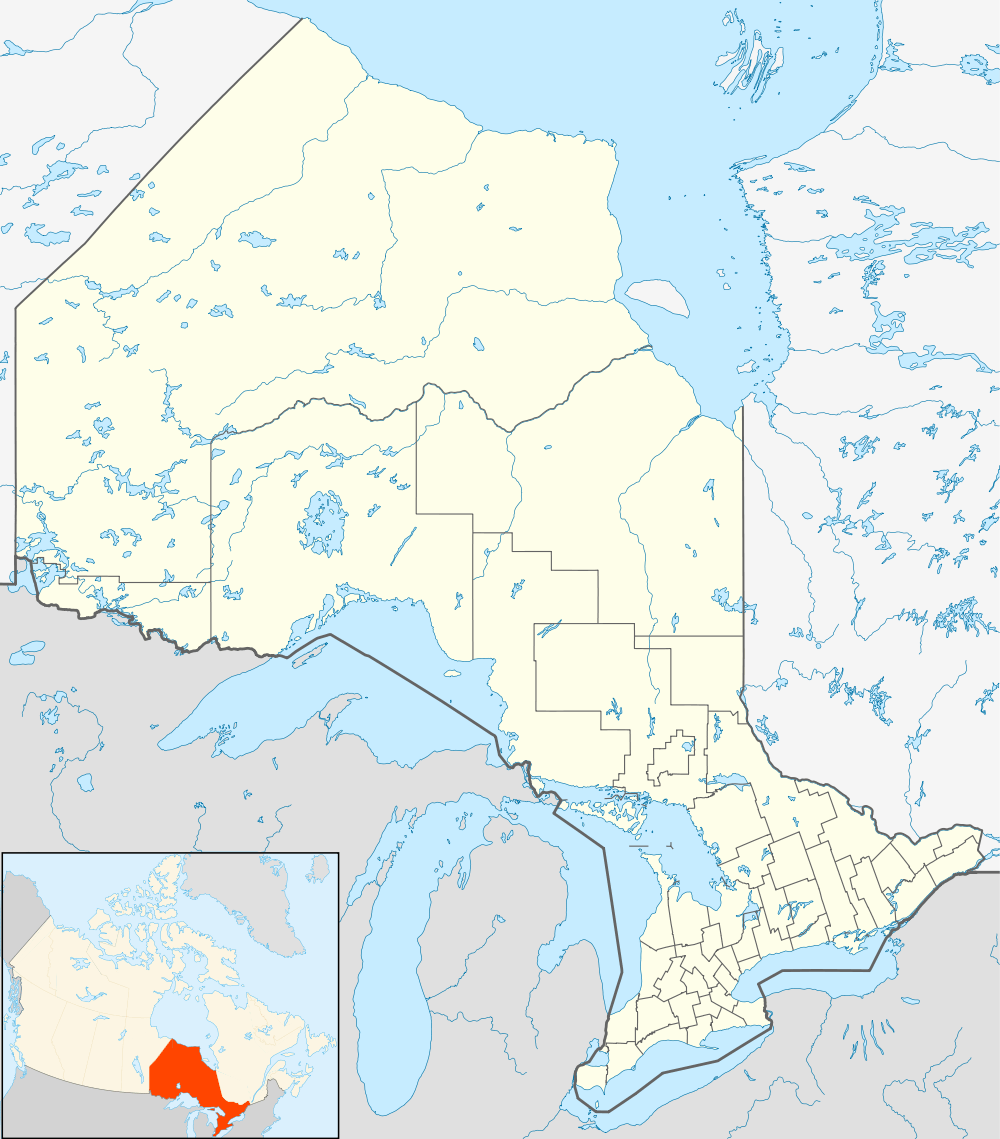Bolton, Ontario
| Bolton | |
|---|---|
| Unincorporated community | |
 Bolton | |
| Coordinates: 43°52′50″N 79°44′17″W / 43.88056°N 79.73806°W | |
| Country | Canada |
| Province | Ontario |
| Regional municipality | Peel |
| Town | Caledon |
| Ward | 5 |
| Area[1] | |
| • Land | 11.15 km2 (4.31 sq mi) |
| Population (2011)[2] | |
| • Total | 25,954 |
| • Density | 2,327.8/km2 (6,029/sq mi) |
| Time zone | EST (UTC-5) |
| • Summer (DST) | EDT (UTC-4) |
| Forward Sortation Area | L7E |
| Area code(s) | 905 and 289 |
| NTS Map | 030M13 |
| GNBC Code | FDJLH |
Bolton (2011 population 25,954) is the most populous community in the town of Caledon, located in the Region of Peel, approximately 50 kilometres northwest of Toronto, in Ontario, Canada. In regional documents, it is referred to as a 'Rural Service Centre.' It has 26,478 residents in 8,721 households.[3] The downtown and area that historically defined the village is in a valley, through which flows the Humber River. The current village extends on either side of the valley to the north and south.
Geography
The conservation lands' forests dominate a large part of the northwest, the north, the east including along the Humber valley. These conservation lands have created several recreational areas; including parts of the Humber Valley Heritage Trail. Farmland and the protected Oak Ridges Moraine dominate the landscape surrounding the village.
There are two 400-series highways nearby, including Highway 427, about 15 km southeast (by Highway 7), and Highway 400, about 14 km east (exit at King Road).
History

The town, formerly known as Bolton Mills, was founded in around 1822 when James Bolton helped build a flour mill for his relative George Bolton.
By 1857, Bolton was a village with a population of 700 in the Township of Albion County Peel. It was established on the River Humber on the line of the proposed Toronto Grey and Bruce Railway. There were stages to and from Weston. The average price of land was $40 to $50 an acre.[4]
The suburban housing developments began near King Street, up to 15th Sideroad of Albion (now known as Bolton Heights Road). The urban area did not expand until the late 1970s and early 1980s, which also led to development of an industrial area in the southwest. The urban area up to Columbia Way - the northern boundary - began booming in the late 1980s. Housing developments continued towards the southern and the western parts of the town about 1 km northwest of the heart of town in the 1990s and the 15th Sideroad in about 1995, especially to the north. The industrial area began adding buildings to the southwest up to Simpson Road. The urban areas merged with the southern part in 2000 and the northwest.
Future growth is a subject of debate amongst the village's residents as well as within the upper- and lower-tier municipal governments.
Organizations
Media
The 1996 Warner Bros. film Twister and the 2005 film Four Brothers were partially shot here.
Education
Bolton is home to several public and Catholic schools:
Public Elementary Institutions:
- Allan Drive Middle School
- Ellwood Memorial Public School
- James Bolton Public School
- Macville Public School (just outside Bolton located in Caledon)
Public Secondary Institutions:
Catholic Elementary Institutions:
- Holy Family Elementary School
- Pope John Paul II Elementary School
- St. John the Baptist Elementary School
- St. Nicholas Elementary School
Catholic Secondary Institutions:
- St. Michael Catholic Secondary School
Private Institutions:
- Bolton Montessori School
- King's College School (Just outside Bolton located in Caledon)
Notable individuals
- Lorne Duguid – hockey player
- James East – politician
- Todd Elik – hockey player
- Organik (musician) – Musician
- Steven Halko – hockey player
- Peter Holland – hockey player
- Skye Sweetnam – singer
Geographic location
 |
Palgrave | Cedar Mills, Stonehart |  | |
| Caledon East | |
Nobleton | ||
| ||||
| | ||||
| Snelgrove, Wildfield | Brampton | Kleinburg |
See also
References
- "(Code 0080) Census Profile". 2011 census. Statistics Canada. 2012. Retrieved 2012-02-25.
Notes
- ↑ Statistics Canada: 2012
- ↑ Statistics Canada: 2012
- ↑ (Town of Caledon Population Distribution - June 30, 2006 - http://www.town.caledon.on.ca/contentc/townhall/statistics/Caledon_Population_Distribution_30JUN06.pdf)
- ↑ The province of Ontario gazetteer and directory. H. McEvoy Editor and Compiler, Toronto : Robertson & Cook, Publishers, 1869
External links
- The Town of Caledon official website
Coordinates: 43°53′50″N 79°44′17″W / 43.89722°N 79.73806°W
